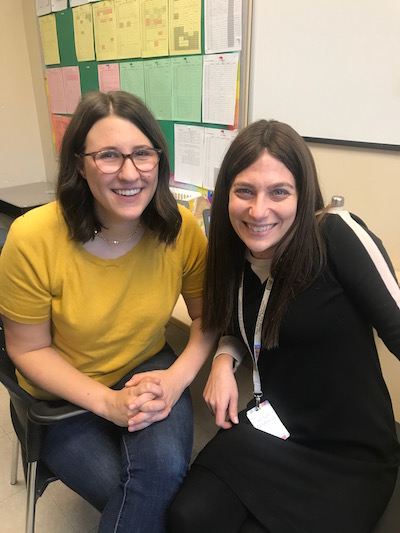Our big idea is that: in order to be empathetic, we need to be able to understand others’ perspectives. Through experiences with text (Hebrew, Judaic and otherwise), music, visual arts, and drama, students explore what shapes perspective, how perspective changes over time, and how understanding others' perspectives helps us interact effectively.
Entry Narrative
Belonging to a kehilla necessitates an identification with, and understanding of, our own and others’ perspectives. In order to be empathetic, we have to recognize and accept that one, what you see isn’t necessarily what you get. That is, people are complex and respond to situations in complex ways. Two, understanding others’ perspectives deepens our appreciation for their actions and decisions.
In this unit, students engage with English, Hebrew and Judaic texts, song, drama, art, and each other, to develop a greater understanding of perspective and what it means to be a member of a kehilla.
Unit Outline
Lesson 1: Introduction to Perspective
Students read Duck! Rabbit! (Appendix A) to develop familiarity with the unit’s key terminology and big idea.
Lesson 2: External and Internal Factors that Shape Perspective (Appendix B and C)
Students peruse optical illusions and in small groups, brainstorm the internal and external factors that shape perspective. Individually, they analyse a well-known character from a book, television show, or movie and determine what internal and external factors may have shaped the decisions that character makes.
Lesson 3: Perspective Changes Over Time (Appendix D)
Students listen to and read lyrics to Harry Chapin’s “Cat’s in the Cradle”. Engaging in a “graffiti” activity, students identify the ways in which the father and son in the song change their perspectives over time.
Lesson 4: Perspective Changes Over Time – Art (Appendix E)
In collaboration with art teacher, Michelle Cohen, students create single-point perspective art. The art’s background is collaged with words and images that affects the student’s perspective (e.g., age, family, religion, politics, interests, gender, etc.). The art’s foreground contains single-point perspective illustrations of their names.
Lesson 5 and 6: Understanding What Shapes Others’ Perspectives is Complex and Important Part One and Two (Appendix F and G)
Students read the article, Six Habits of Highly Empathetic People, and summarize their findings. Then, students practice empathy by engaging in role-playing and an active listening exercise.
Lesson 7: Two Sides of the Same Coin (Appendix H)
Students will understand that one situation can be viewed in multiple ways using Arik Einstein’s Mishkafayim Vroodot as a source.
Lesson 8: Perspectives on Prayer (People Pray for Different Reasons) (Appendix I)
Students explore multiple versions of the same prayer in order to develop an awareness that 1) people pray for different reasons, 2) that prayer is deeply personal and 3) that different people connect to different prayers.
Lesson 9: Mah Tovu (Does Space Affect Perspective?)
Students participate in a moving Tefillah service to investigate the ways in which physical space may affect perspective.
Lesson 10: Parashat Hashavuah (Appendix J and K)
Students are introduced to first and third person perspective in writing, and are introduced to an assignment wherein they must summarize, in third-person, a parasha story, and retell it, in role, from a first-person perspective.
The Detailed Unit Plan – https://docs.google.com/document/d/1MalZ9MzX-EBzl0wGYilRSIxgP0Dcz3EtcQaOvXsu1Mc/edit?usp=sharing
The Appendix – https://docs.google.com/document/d/1IGELjHJh7C96BxmU3dFllCaZMyl0YCBKeaJ2jxOnpRY/edit?usp=sharing
Entrant Bio(s)
Rena Markus is currently serving as the Vice Principal at Paul Penna Downtown Jewish Day School. For the previous 14 years, Rena worked in the school as a Senior Kindergarten to Grade Four teacher. In conjunction with her duties as Vice Principal, Rena oversees the Judaic Studies curriculum for the entire school.
Jaime Saltz is currently serving as the Grade Five Core Teacher and Teacher-Librarian at Paul Penna Downtown Jewish Day School. It is her fourth year at the school and second year as the Grade Five Core Teacher.

This entry has been tagged with the following terms: